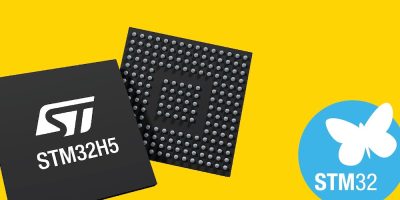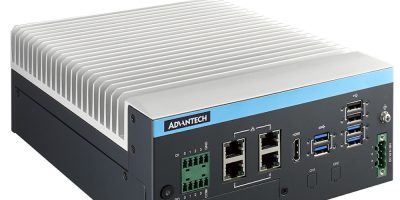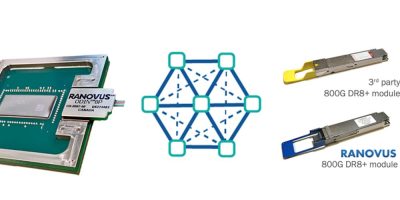Combining an Arm Cortex-M33 and Trust EE Secure Manager, the STM32H5 microcontroller has been designed by STMicroelectronics to make security simpler and to boost performance and security for smart applications.
The STM32H5 microcontrollers contain the Arm Cortex-M33 embedded core, which blends performance with security, energy efficiency and affordability, said ST to address the mid-range class of MCU-based applications. According to the company, the STM32H5 is the world’s highest performing Cortex-M33 implementation, running at 250MHz and 375 DMIPS for an EEMBC CoreMark industry reference score of 1023.
The STM32H5 series is designed to accelerate innovation at scale for the coming generations of smart, connected devices, which provide more intelligence “in the edge” and also strengthens defence against attacks on IoT assets. The Cortex-M33 core brings Arm’s TrustZone architecture. ST adds a range of its own security features, including some developed with ST Authorized Partner, ProvenRun.
The STM32H5 is believed to be the first MCU series to come with SoC security services accessed via an industry-standard application programming interface (API). This is called the STM32Trust TEE Secure Manager which saves developers writing their own code while providing security services developed according to known best practice. It simplifies development while ensuring effective protection.
Ricardo De Sa Earp, executive vice president general purpose microcontroller sub-group, microcontrollers and digital ICs group expects the STM32H5 microcontrollers to be used in smart homes, factories and cities making them intelligent, safe, and sustainable.
The STM32H5 MCUs also improve energy efficiency by leveraging ST’s advanced 40nm CMOS process technology and improved on-chip power conversion circuits. Power dissipation is no longer a constraint when using a 250MHz device in harsh environments where the ambient temperature can reach 125 degrees C, added ST. The STM32H5 microcontrollers are SIL-ready for products that must meet an appropriate safety integrity level (SIL), thanks to native hardware features that address a wide range of industrial and medical applications.
Typical applications include air conditioning systems, appliances, and alarm systems, industrial programmable logic controllers (PLCs), motor controls, industrial pumps, communication gateways, lighting controls, and energy conversion. They are also used in consumer products such as PC peripherals, smartphones, and accessories.
ST has been a lead development partner with Arm, supporting development of the Cortex-M33 core to comply with the PSA Certified Level 3 and GlobalPlatform SESIP3 security specifications. ST has collaborated with Microsoft Azure on middleware with strong security.
The STM32Trust TEE Secure Manager is developed with ProvenRun and powered by ProvenCore-M to ensure today’s highest security-assurance levels. The SoC security services provided include isolation, cryptography, key storage, and initial attestation.
To help users maximise its potential, ST has created dedicated development kits NUCLEO-H503RB, NUCLEO-H563ZI and STM32H573I-DK with examples showing how to use the security services and integrated all the necessary software tools and support in the STM32Cube development ecosystem.
The new devices also provide in-ST factory pre-provisioning credentials for seamless registration to various cloud and OEM servers, multi-tenant IP protection, and remote pre-integrated 3rd party public key infrastructure (PKI) lifecycle management.
The Kudelski IoT keyStream root of trust, from ST authorised partner Kudelski IoT, was pre-qualified on the STM32Trust TEE Secure Manager to allow remote credential lifecycle management services.
The STM32H5 MCUs raise dynamic efficiency to 61 microA per MHz in switched mode (SMPS) and 120 microA per MHz running off the linear (LDO) converter (at VDD = 3.3V and 25 degrees C) in run mode with peripherals off.
The product lines initially available include the STM32H503 product line with128kbyte flash, allowing 250MHz computing capability in space- and cost-constrained applications. The STM32H562 and STM32H563 product lines have up to 2Mbyte flash, rich connectivity, and deliver 250MHz over the extended temperature range up to 125 degrees C. The STM32H573 includes AES cryptographic acceleration and security services.
Mass production is beginning now, starting with the STM32H503 and STM32H563.







